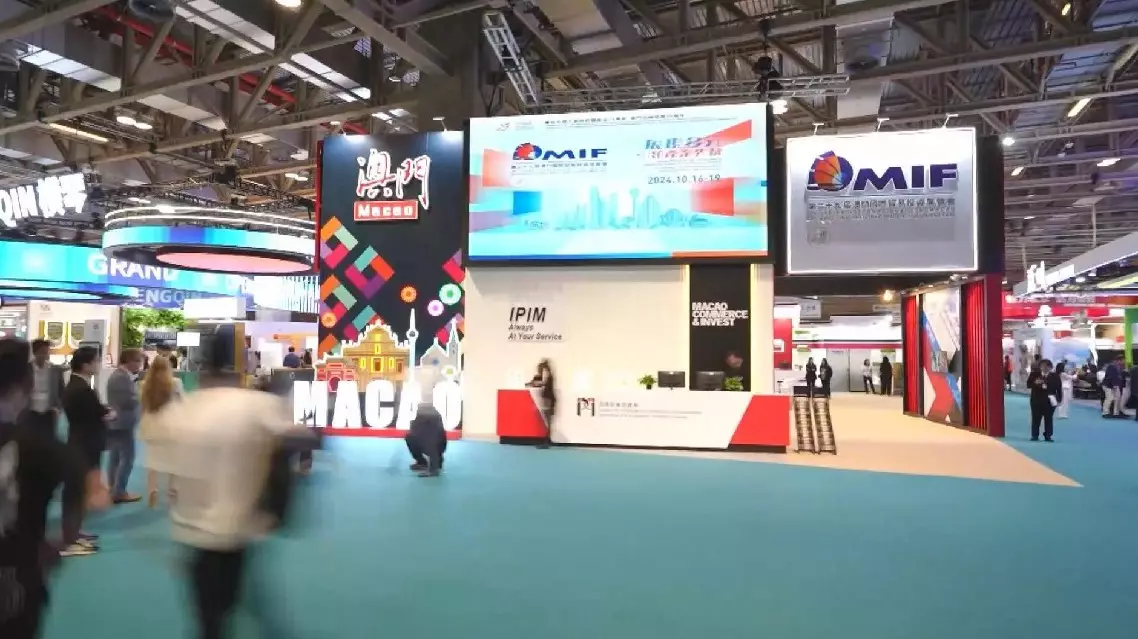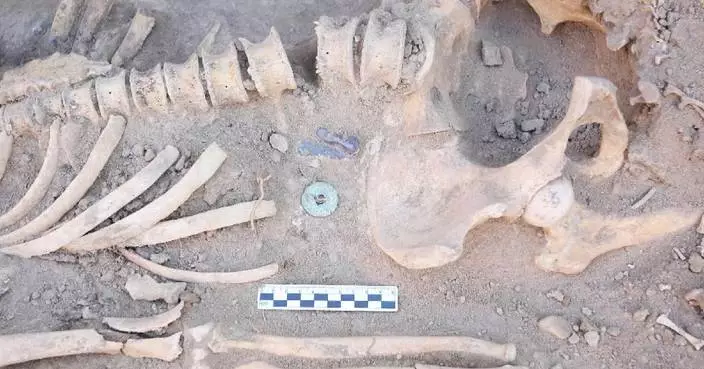Savory mooncakes are becoming a new trend for celebrating the Mid-Autumn Festival within Singapore's Chinese community this year, prompting local bakeries and restaurants to experiment with innovative fillings such as meat, crayfish, salted egg yolk, and more.
As the Mid-Autumn Festival approaches, the Ngee Ann City complex is hosting a mooncake fair, attracting local and international bakeries and restaurants to offer a variety of options for residents.
While traditional flavors like lotus seed paste and crushed nuts remain popular, savory mooncakes -- particularly those with meat fillings -- have emerged as the hit this year.
"We started with Shanghai savory meat mooncakes and later experimented with crayfish, salted egg yolk, and our special recipe, crab meat mince mooncakes. We did not expect that, after launching them on the market, Singaporean customers would go from initially being surprised and shocked to fully accepting them. Now, they even place orders with us in advance," said Wang Yanqing, who initiated the creation of the new type of mooncake at a local restaurant..
The restaurant reports that more than 70,000 mooncakes were sold in just one month. The savory mooncakes have received many compliments and have quickly become a new local favorite.
"This is the first time I’ve tried a meat mooncake. Let me put it that way: it’s savory. It is a brand-new type of mooncake for us. It tastes very special, very innovative," said Fang Xiaolin, a Singaporean customer.
"Actually, it was the first time trying the savory mooncakes. I think it's so innovative and interesting because it's just very different from the usual mooncakes that we have in the market, so it tastes really savory and fresh, and I think a lot of Singaporeans will like it," said Fu Lina, another Singaporean customer.
In addition to enjoying a variety of mooncakes, Singaporean Chinese celebrate the festival with lantern shows, similar to traditional Chinese customs. The annual Mid-Autumn lantern show lights up Niu Che Shui Chinatown every night, attracting both locals and visitors.
The Mid-Autumn Festival has long been a cultural cornerstone for Chinese communities around the world.

Savory mooncakes gain popularity as Singapore celebrates Mid-Autumn Festival
Macao has been emerging as a global hub for conventions and exhibitions in recent years by exploring the enormous opportunities in the sector, driving the region to advance its economic diversification and embrace a brighter future.
Macao has received many awards this year, such as the Best Convention City (Asia) and the Best BT-MICE City, showcasing the recognition for and influence of Macao's exhibition industry.
More than 1,000 electronic game enthusiasts from all over the world gathered recently in Macao to participate in a esports themed event.
Su Zhili, organizer of the event, said that Macao's rich experience in hosting large-scale events, coupled with its good infrastructure, has driven him to choose the region as an ideal destination to hold such an activity.
"Macao has held many similar large-scale events. It has rich experience, and the facilities at the venue are relatively mature, so we can start our work comfortably," said Su.
During the first three quarters of 2024, Macao held more than 1,000 conferences and exhibitions in total.
"We will invite more professional, special conferences to be held in Macao and also cultivate more exhibition brands with international influence in Macao, so as to promote Macao's exhibitions to be more market-oriented, professional, international, digital and greener from various aspects. This is our goal," said Elaine Wong, member of the Macao Commerce and Investment Promotion Institute.
In addition, multiple large exhibitions and conferences, such as the Macao International Trade and Investment fair, the Macao Franchise Expo, and the International Infrastructure Investment and Construction Forum, are held regularly in Macao.
With the introduction of a series of policies and measures to facilitate the exchanges between the mainland and Macao, as well as the construction and development of the Guangdong-Hong Kong-Macao Greater Bay Area and the Guangdong-Macao In-Depth Cooperation Zone in Hengqin, Macao's convention and exhibition industry will embrace more opportunities for development in the foreseeable future.
"We have such a good industrial base in the Greater Bay Area. The mode of 'Convention and Exhibition + Industry' not only integrates the industries of Macao, but also the industries of the Greater Bay Area. In addition, Macao actively integrates into the national development and plays a role in the Belt and Road. Why are we so confident in Macao's convention and exhibition sector? Because it is backed by the motherland, and the country gives Macao great support," said Alan Ho, chairman of the Macao Association of Convention, Exhibition and Tourism Sectors.

Macao emerges as global hub for conventions and exhibitions, driving economic diversification and international recognition










